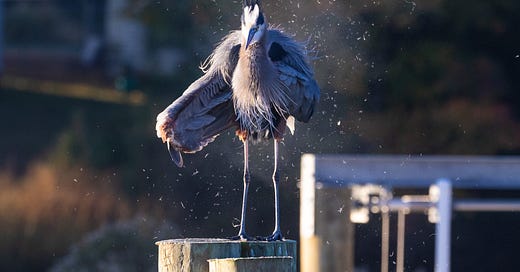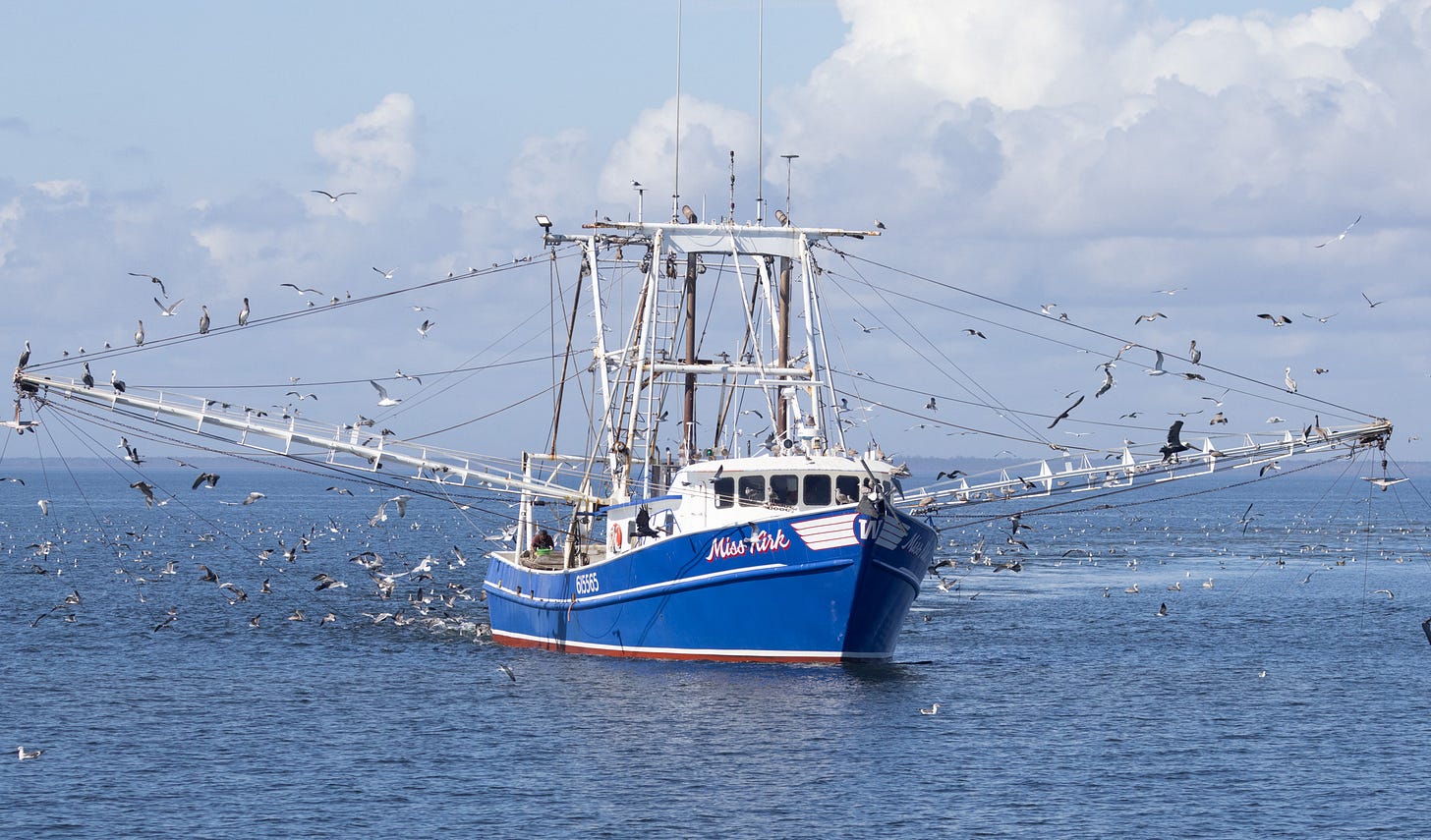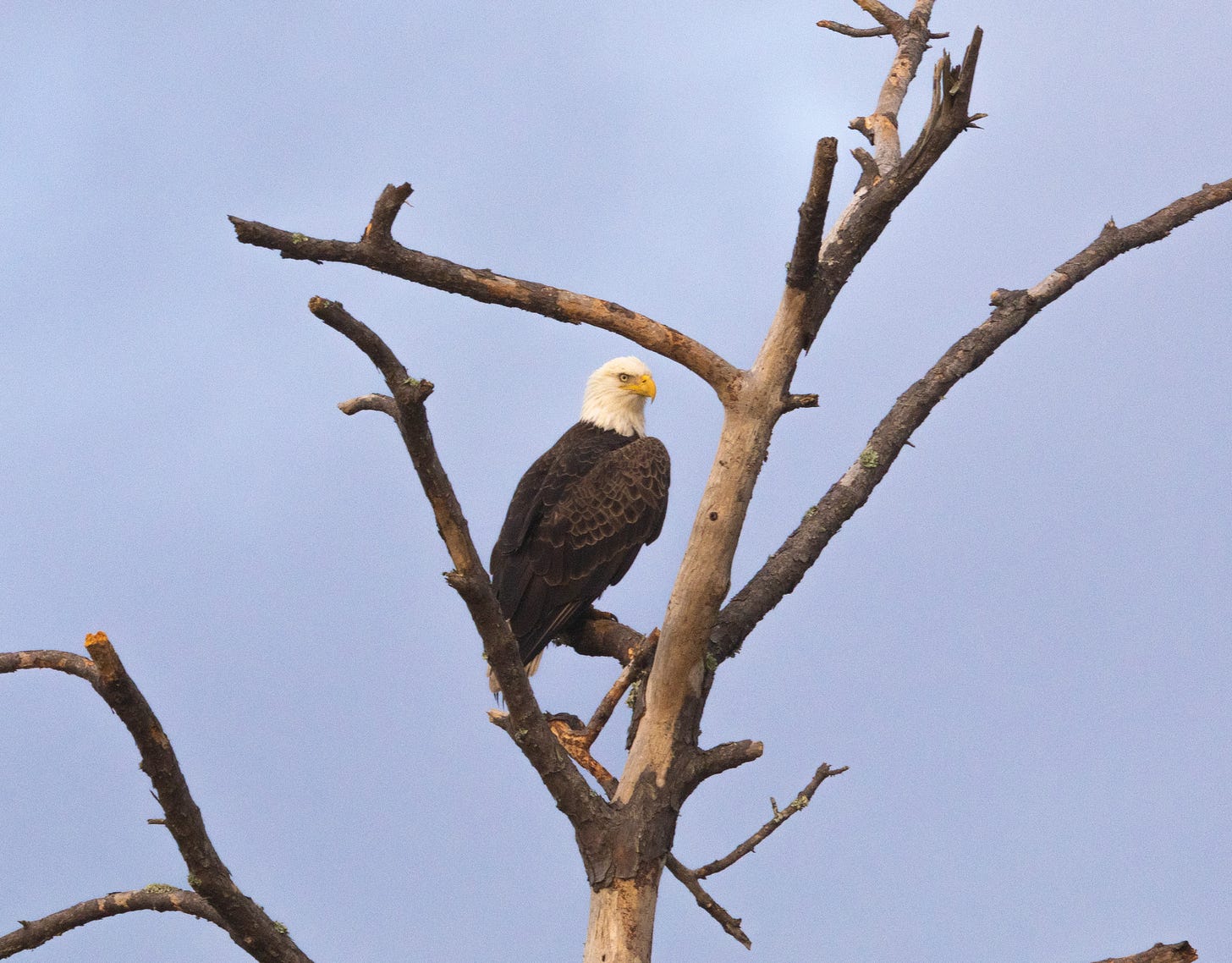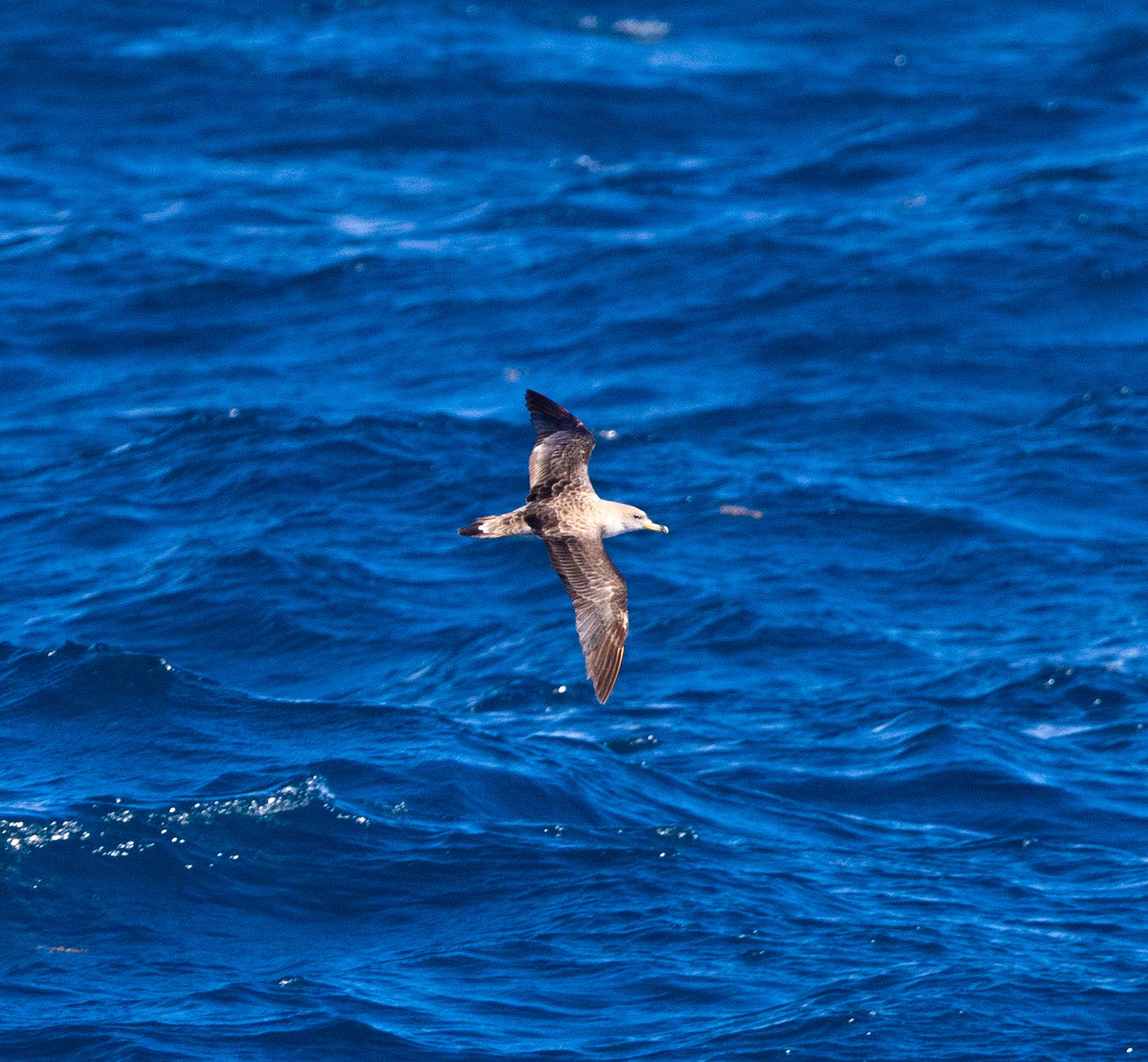1. Let's begin with some good news for a bird most of us will likely never see - the Great Indian Bustard: Last month brought good news for the great Indian bustard, a critically endangered bird found mainly in India. Wildlife officials in the western state of Rajasthan have performed the first successful hatching of a chick through artificial insemination. A lone adult male in one of two breeding centres in Jaisalmer city was trained to produce sperm without mating, which was then used to impregnate an adult female at the second centre some 200km (124 miles) away. Officials said the development was important as it has opened up the possibility of creating a sperm bank. (via BBC)
2. "Terror birds" (well, it was 13 million years ago) make the NY Times: Mr. Perdomo, 44, is a longtime rancher who, like many people in this region, has collected fossils all his life. The Tatacoa Desert is home to rich deposits of fossils from about 13 million years ago, the height of the Middle Miocene epoch. The non-avian dinosaurs were long dead by then, and South America was an island continent, not yet connected to North America. It belonged to oversize hoofed mammals like toxodonts, distant relatives of today’s rhinoceroses and tapirs; tall crocodiles that walked on land; thickly armored armadillo-like creatures called glyptodonts; and giant, flightless birds known as terror birds, with powerful legs and flesh-ripping beaks. It was a unique time in geological history when birds enjoyed a glorious role as top predators. (via The New York Times)
By Hap Ellis, Great Blue Heron - Inland Waterway, Reedville, VA.
3. The bat-bird evolution paradox: There are birds that waddle along riverbanks like ostriches, or spend their lives by the sea like the wandering albatross. But why not bats? The answer to this question might have just been found by a group of researchers at Cornell University. It is important to understand that the evolutionary pathways of bats and birds are markedly different. The evolution of bats’ wings and legs is tightly coupled, which seems to have limited them to fewer ecological niches than birds. A surprising finding was that the opposite is true for our feathered friends. “We initially expected to confirm that bat evolution is similar to that of birds, and that their wings and legs evolve independently of one another. The fact we found the opposite was greatly surprising,” said Andrew Orkney, postdoctoral researcher in the laboratory of Professor Brandon Hedrick. (via Earth)
4. A University of Vermont study examines the complexity behind bird population declines: As bird populations dwindle across the globe, a new study from University of Vermont researchers suggests some species may be more flexible to habitat changes than previously understood, creating new opportunities for supporting populations through city planting efforts. The team’s findings were published in the Journal of Animal Ecology today. (via University of Vermont)
5. We often find some nuggets in local papers, like Gary Lee reporting in the Adirondack Almanac that he's been banding Northern Saw-whet Owls for every night for two weeks with 23 in the hand - a BNI favorite owl: It has been another wonderful week of nice fall weather with freezing temperatures almost every night and warm sunny days with some days reaching the 60s. The leaves have now mostly fallen, and I can tell as I can see the streetlights from my bedroom window. The beech leaves were the last to come down this week, and they sure do make a mess in my bird nets. These leaves are quite dry, and people should be careful with any outdoor fires as they can spread rapidly with the smallest amount of wind. There have been a few small fires locally and some bigger ones across the state. The couple of small rain and snow showers we had were quickly dried out by the sun and wind. The bird world has been popping in and out in the last couple of weeks with sparrows, juncos and other small songbirds moving south. (via Adirondack Almanack)
6. Speaking of local stories, here's a great example of a local conservation success - in the Granite State: Ossipee selectmen on Monday announced that there will be no trespassing on Loon Island, which the town purchased at the end of October. The news of the purchase and the decision to reserve the island for wildlife was met with enthusiasm from representatives of a local lake association. The previous owners of the private island had proposed building a large dock, which had sparked concerns among other lake enthusiasts. According to the Ossipee Lake Alliance, in May, the state Department of Environmental Services approved a plan for an 82.5-foot wharf with five 34-foot piers, to be accessed via a 6-foot walkway on Loon Island. At the time, the island was owned by Deborah Randall of Ossipee. The warranty deed for the property was executed on October 23. (via Concord Monitor)
By Hap Ellis, Shrimp Boat & Gulls/Cormorants/Pelicans - Pamlico Sound, NC.
7. Last week we had a long piece in the Times on the Indonesian song bird trade. Similar issues in Guatemala made (good) news this week: Thirty-six wild animals, who were rescued from adverse situations including the illegal pet trade, returned to their natural habitat in the Peten jungle, Guatemala, thanks to the joint work of non-governmental organizations Asociacion Rescate y Conservacion de Vida Silvestre (known as ARCAS) and Humane Society International/Latin America. Six coatis, eight chachalaca birds, seven opossums, five pygmy owls, three kinkajous and two gray falcons, among others, were released in the Mayan Biosphere Reserve, after undergoing an intense rehabilitation process, and with the authorization of the Guatemalan National Council of Protected Areas or CONAP. Many of these wild animals were illegally removed from their wild habitat to be used as pets. (via Humane Society International)
8. MassWildlife touting the MOTUS system - as they should, given its importance in understanding migratory patterns: MassWildlife is collaborating with the U.S. Fish and Wildlife Service (USFWS), numerous state wildlife agencies, Worcester Polytechnic Institute, and other conservation partners on a range-wide project examining the annual movements and survival of the wood thrush. Wood thrushes (Hylocichla mustelina) are Neotropical migrant forest nesting songbirds that have been experiencing long-term population declines. It is estimated that over 50% of the population has been lost since 1970. They are listed as a Species of Greatest Conservation Need in MassWildlife’s State Wildlife Action Plan and a Species At-Risk by the USFWS. (via Mass Gov)
9. Sadly, as we know, migration can be deadly: Tens of thousands of dead and dying birds are washing up along the eastern seaboard after a “mass mortality” of migratory short-tailed shearwaters. Authorities on the alert for the deadly H5N1 strain of bird flu have tested the dead shearwaters, also known as muttonbirds, in NSW and Victoria for avian influenza, but have so far found no sign. Australia is the only continent on which H5N1 – which has spread to wild bird populations and mammals – has not been found. Experts say the most likely source of infection in Australia could be the spring migration of birds from South-East Asia and have warned people not to handle dead birds without wearing gloves. (via Sydney Morning Herald)
10. Daily Kos' Dawn Chorus tackles "LBB's": LBBs (Little Brown Birds) trouble me. I had a case where I observed a species and was sure I’d made the correct identification. When I posted my results on line, a different conclusion was given by other birders. A synopsis of the exchange after the page break. I knew I had to collect as much information about the specific bird before choosing my id, there is a big list including: body markings, coloration, size, location, time of year (for migrating species), environment, habits while being observed and song (if recorded). I had a decent portion of necessary items from the list when I named the bird (in my video below) a Vesper Sparrow. Those points are — definite white eye ring, rounded head, streaked upper breast, correct leg color, general large body and white throat. I consulted my research sources for confirmation. The strongest indicator for a correct selection was the description of a Vesper’s song from Sibley’s Guide and Cornell’s website. (via Daily Kos)
By Hap Ellis, Bald Eagle - Inland Waterway, VA.
11. Good on ya! Audubon honors Douglas Tallemy for making birds and birding accessible to millions: The National Audubon Society’s Connecticut and New York office celebrated the ability of individual voices to inspire millions of people to action at the 2024 Keesee Awards Luncheon. The prestigious Thomas W. Keesee, Jr., Conservation Award recognizes those who show remarkable leadership and commitment to protecting birds and the places they need. At this year’s event, we honored Douglas Tallamy with the Keesee Award for his life’s work. An ecologist, educator, and author of books such as Nature’s Best Hope and The Nature of Oaks, Doug inspired a national movement to protect birds and insects by sharing research and findings from his own backyard. As a co-founder of Homegrown National Park, he has inspired over 38,000 biodiversity heroes to regenerate 100,000 acres in three years. (via New York Audubon)
12. Wish we'd been invited: On a recent field trip to Patuxent River Park in Upper Marlboro, Maryland, undergraduate students from George Mason University’s Smithsonian-Mason School of Conservation got to view secretive marsh birds up close, including Virginia and sora rail birds. The Wildlife Ecology and Conservation students learned about a long-term bird banding and radio-tracking study on sora rails and other varieties of birds. Patuxent River Park is part of the Jug Bay Natural Area and Wetlands Sanctuary. The students learned about the annual migratory journey of these beautiful and elusive birds and the efforts to protect them. Soras live in marshes and wetlands throughout North America, and they migrate more than 500 miles to Central and South America for the winter. (via George Mason University)
13. NPS touts Carlsbad Caverns National Park in New Mexico: Carlsbad Caverns National Park (NP) in New Mexico is known for its underground beauty, but visitors who stay above ground are exposed to the musical talents of the birds above! A hidden gem in the park is Rattlesnake Springs which is home to an abundance of biodiversity. This desert oasis provides a lush habitat for a variety of bird species, including the southwestern willow flycatcher (Empidonax traillii extimus). The southwestern willow flycatcher is a small bird of less than 15 cm that preys on insects, often catching them in mid-air. They help maintain a balanced ecosystem by keeping insect populations in check. Southwestern willow flycatchers occupy habitats in riparian zones— or land that occurs along bodies of water, such as Rattlesnake Springs. (via National Parks Service)
By Hap Ellis, Corey's Shearwater - Atlantic Ocean off Duval County, FL.
14. No surprise with this conclusion: Bird strikes with aircraft pose a serious threat to human safety. The problem dates back to the early days of aviation, with the first death of a pilot recorded in 1912 when an aircraft crashed into the sea after striking a gull. Since then, 795 lives have been lost to collisions between aircraft and birds, not to mention the countless bird fatalities. As aircraft get faster, quieter, larger and more numerous, the risk of serious accidents increases accordingly. Every year, the aviation industry incurs damages worth billions of dollars. To mitigate this problem, airports around the world implement wildlife hazard management, including dispersing flocks away from the runway, tracking local bird movements and managing potential food sources such as landfills and farms near the aerodrome. In our recent study, we zoomed out from the local airport and examined seasonal and hemispheric trends in bird strikes. (via Phys Org)
15. Let's finish with the fun and the reach of bird cams - Maine Audubon offers virtual birding: Virtual birding: This past Thursday, November 7, from 6:30 to 8 pm, we restarted our Virtual Birding program online (over Zoom). Virtual Birding is a guided birdwatching session where, in each session, we’ll watch segments from bird feeder cameras together, identify the birds that we see, and discuss their behavior, much like our regular in-person bird walks. Virtual Birding will take place every other Thursday from November through February. The huge advantage of Virtual Birding is that we can watch bird feeders all over the world and learn about species we would never encounter in Maine. In a typical evening of Virtual Birding, we will usually view feeders in three or four different locations. For example, we often start at the Cornell Lab of Ornithology headquarters in Ithaca, New York, known as Sapsucker Woods. (via Maine Audubon)
Bird Videos of the Week
Video by Terra Mater, “From the Wild to Miami: The Parrot Invasion Story”.
Cornell Live Bird Cam - Black-capped Chickadee and Red-breasted Nuthatch.
Cornell Live Bird Cam - American Crows.








